BenQ XL2720T Gaming Monitor Reviewed
by Chris Heinonen on June 17, 2013 4:35 PM ESTI calibrate every monitor using CalMAN V5 with an i1Pro spectrometer and a SpectraCal C6 colorimeter. Our first calibration target is for 200 nits of light output, the sRGB color gamut, and a power gamma of 2.2. For the calibration I used the Standard mode on the monitor, as that allowed access to the User Color Temperature control, which let me set 100% white correctly without using the video card LUT.
Using this setup, our grayscale really comes into line on the BenQ. Our average error is really non-existent, other than at 0 which we can’t fix, and I can’t exclude from this chart or I would. The color tint has been totally eliminated, and the gamma is almost spot-on. Our contrast ratio has risen to 820:1, a 16% increase in what is often the most important element of an image overall. As far as grayscale goes, this is essentially perfect.
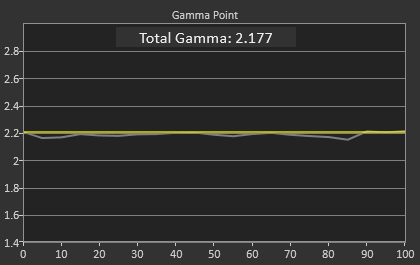
On the color side we see some improvement, but this is mostly due to the improvement in the grayscale. SpectraCal is going to improve CalMAN to remove White from the Gamut dE2000 number, to provide a more accurate data point on how much color error was improved in the future. The red primary is a little under-saturated and green is a little low in luminance, both errors that calibration can’t correct. The color gamut is good, but not excellent.
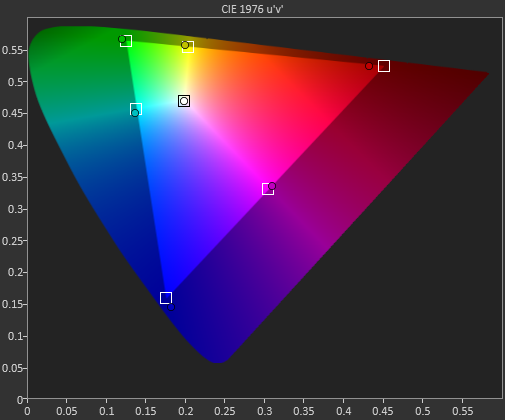
The Colorchecker data is better, but also not perfect here. The formerly high luminance has now been fixed, and luminance is nearly perfect. Those orange-yellow shades continue to cause issues however, with errors close to 3, and the same goes for a shade of blue that lies on the edge of the sRGB gamut. The numbers are much better than before but not as good as some other displays, especially on those orange-yellow colors.

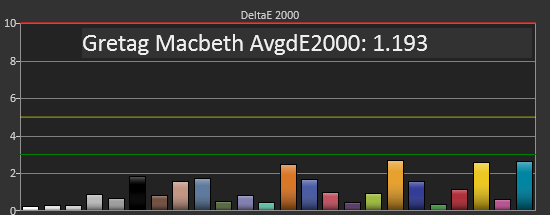

After calibration the saturations are almost worse at 100%, but better below that. Some people disagree on if it is better to have 100% saturation fixed or the values below that have a lower error, but overall the values are better than they were before calibration.
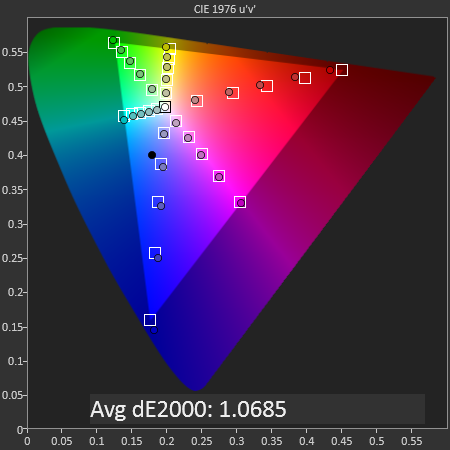
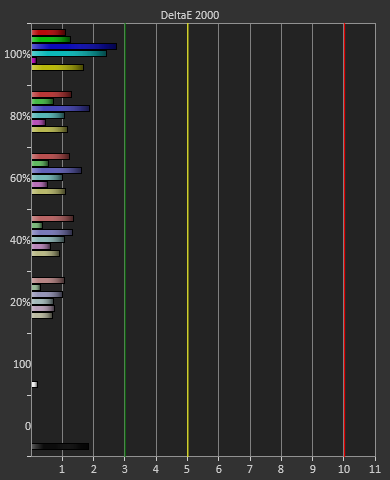
Post calibration, the BenQ is certainly better than it was before it. It is virtually perfect in the grayscale, but the gamut doesn’t improve that much as the issues it has are ones that calibration can’t fix, as calibration can’t add luminance or saturation that isn’t there to begin with. I was happy to see how much the BenQ improved, and you can do much better than the preset sRGB mode.


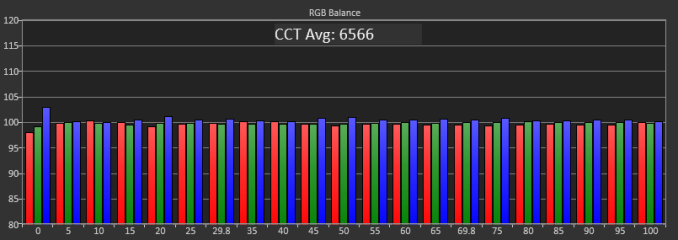
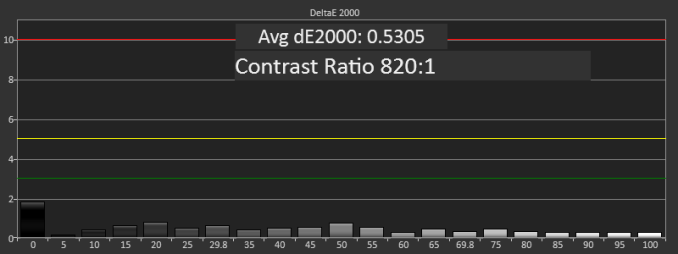










79 Comments
View All Comments
Panzerknacker - Tuesday, June 18, 2013 - link
Yes they did, TN panels just produce such mediocre image quality that there is no immersion anymore of any kind. Lighting effects are just colored spots on a TN, black levels are non existant, if you move from CRT to TN you will just give up on gaming, trust me. Plasma is the best of the currently available displays, good respons and superior image quality, but they start at 40 inches which is too big and you cannot comfortable use them for still images such as desktop due to burn in problems.qiplayer - Saturday, November 9, 2013 - link
See my 5800x1080 fast gaming on youtube channel qiplayer. Im here looking for 120hz, I actually own 3 asus ve278, the image is great the only downside is blur image when moving fast. But whatch the vid, you'll see that you can actually game quite fast also on 60hz monitors.bji - Monday, June 17, 2013 - link
The retina display in my macbook pro looks better than any CRT I ever saw, hands down.Also I put an older Mitsubishi Diamondtron 21 inch next to a fairly old Dell 24 inch IPS panel and I didn't find that I favored one over the other.
BillyONeal - Monday, June 17, 2013 - link
The retina is an IPS panel, so I don't see what point you're trying to make here.A5 - Monday, June 17, 2013 - link
You must only be remembering the good CRTs. Bad CRTs were really, really bad.Not to mention heavy, power inefficient, giant bezels, expensive, etc. I sure as hell wouldn't be able to afford 2 1080p+ CRT monitors, and they probably wouldn't fit on my desk, either.
mdrejhon - Tuesday, June 18, 2013 - link
Panzerknacker, have you tested LightBoost? Google "LightBoost:They give you perfect CRT quality sharp motion on an LCD:
-- Fast panning as perfectly sharp as stationary images.
-- I can read text even during fast scrolling
zehoo - Tuesday, June 18, 2013 - link
Perhaps you should try one of the Korean IPS or PLS 2560x1440 panels that overclock to 120hz if you want better colour reproduction than a TN panel while still having low input latency (models with OSD bypass) and a decent refresh rate. I haven't been able to go back to a 1080 TN 120hz panel since using one.Of course 120hz TN lightboost hack panels is where it's at for the moment if you need low input latency and fast refresh rates for competitive gaming. The trade off being superior colours. By the way I moved from CRT to LCD and didn't stop gaming. Though I only moved when 120hz TN panels first became available.
EnzoFX - Monday, June 17, 2013 - link
Processing lag. I would think this would still be #1 priority for a gamer. I'm surprised it's so high.Guspaz - Monday, June 17, 2013 - link
The first page is called "INTRODUCTION, DESIGN AND SPECS", but there are no specs on the page. I don't even see any mention of the resolution. Is it 1920x1080, 1920x1200, 2560x1440, 2560x1600? There should be a table on this page listing all the details: manufacturer, model, size, resolution, panel type, price, inputs, etc.metril - Monday, June 17, 2013 - link
The first thing I looked for was the monitor resolution and other necessary information. I found nothing. How am I supposed to trust this review if none of the relevant information is presented?